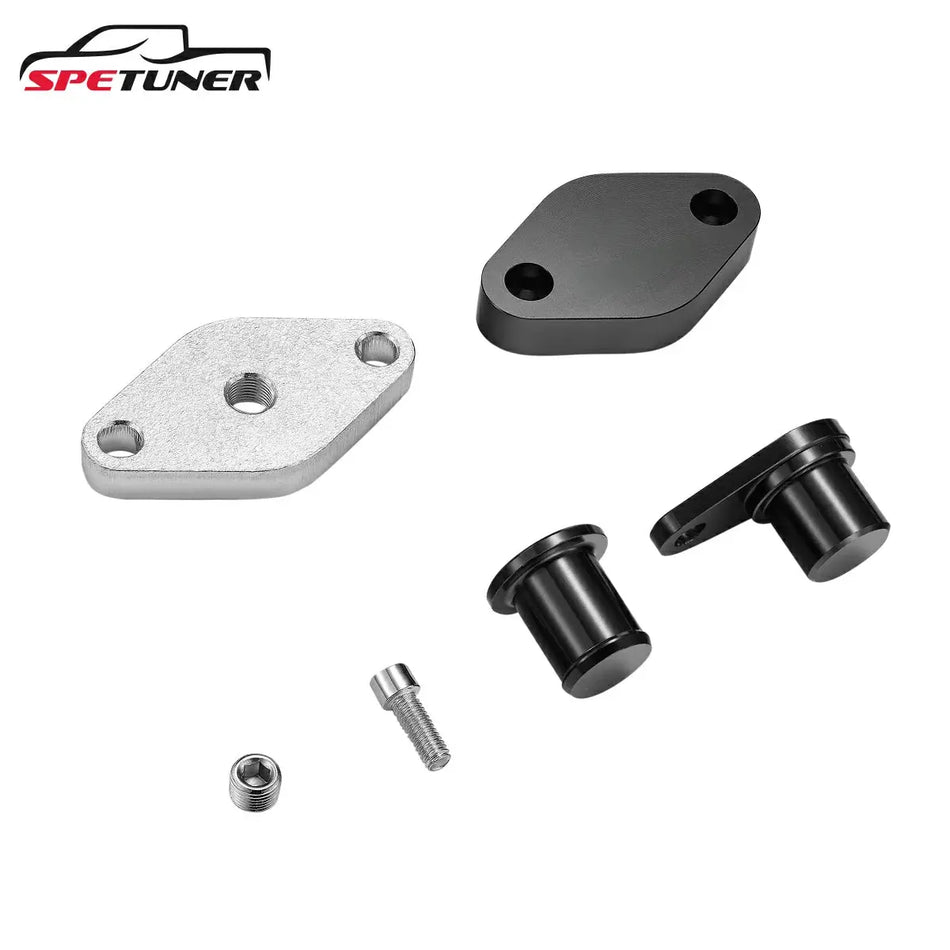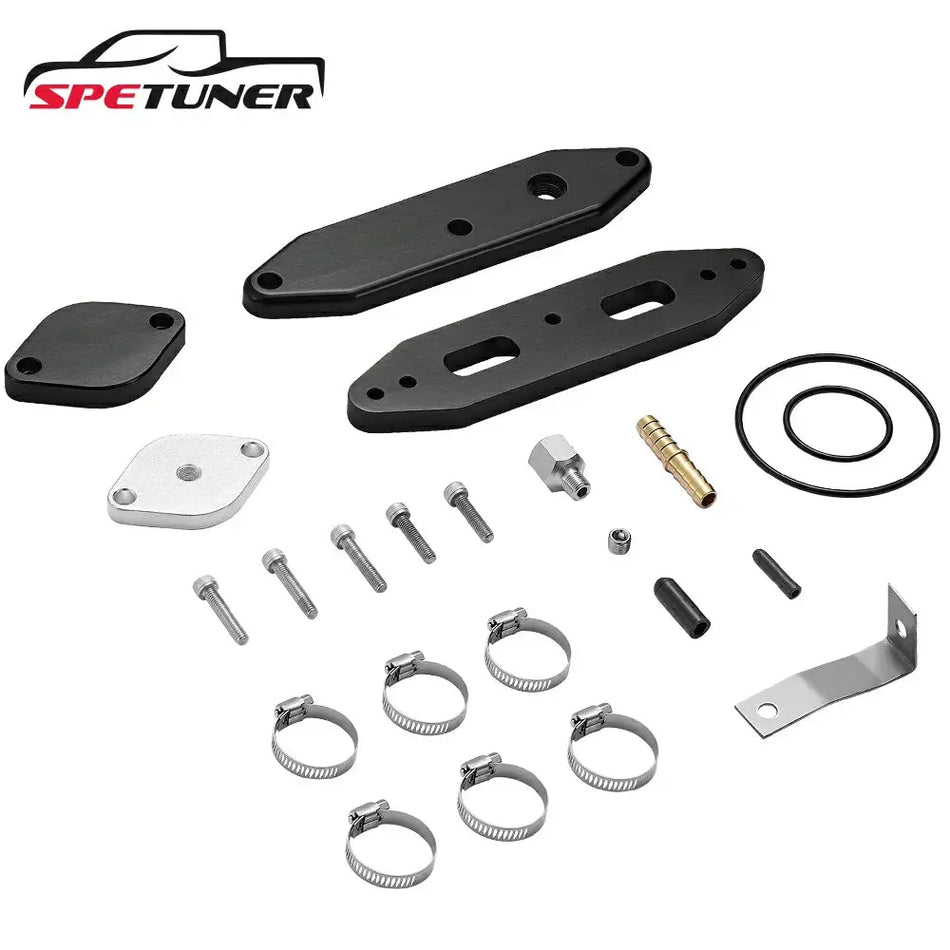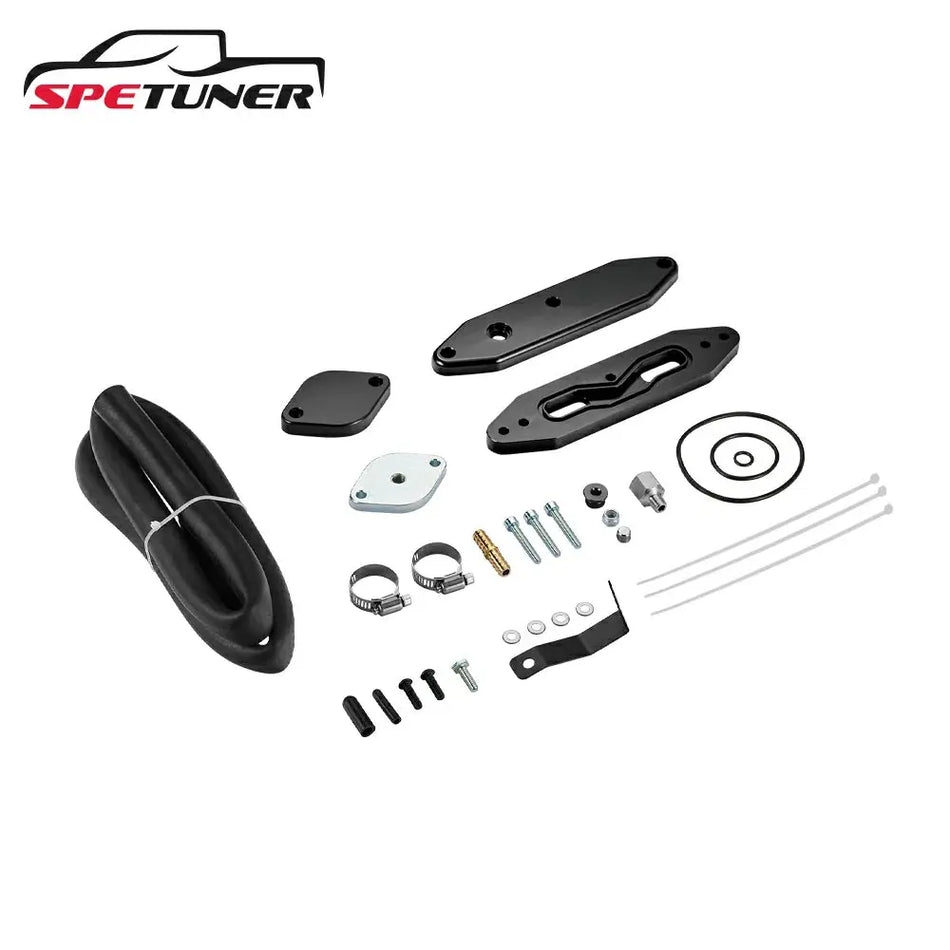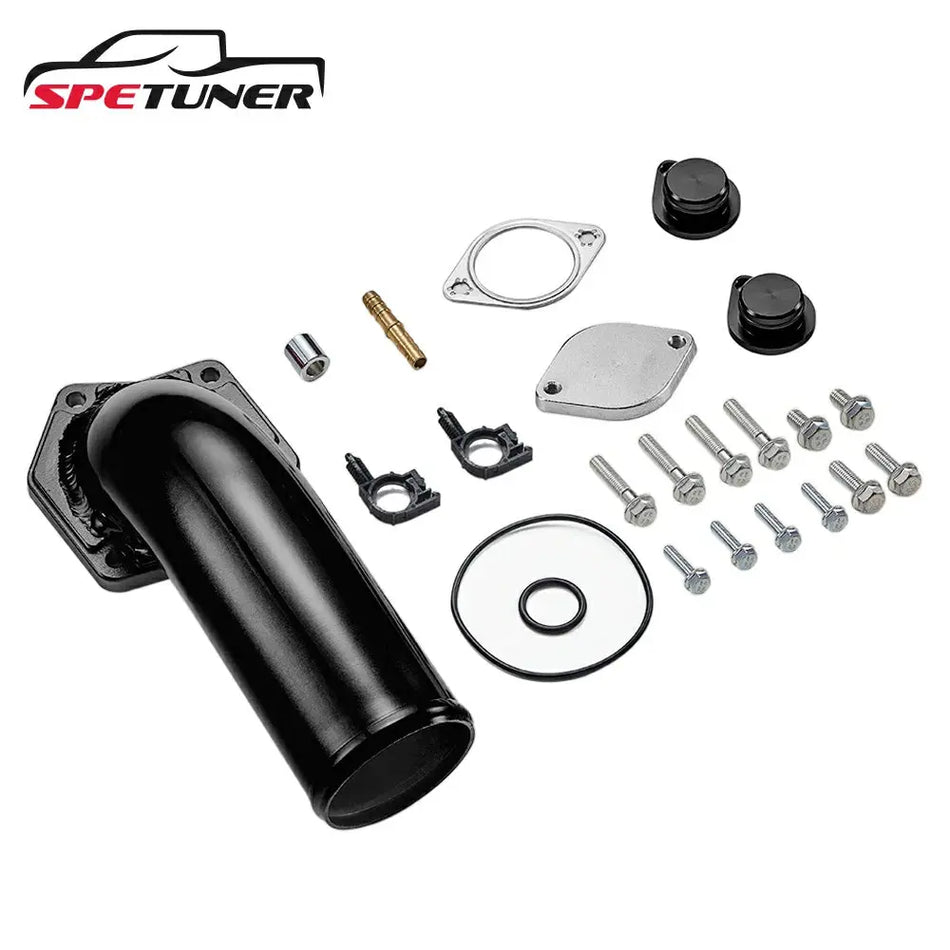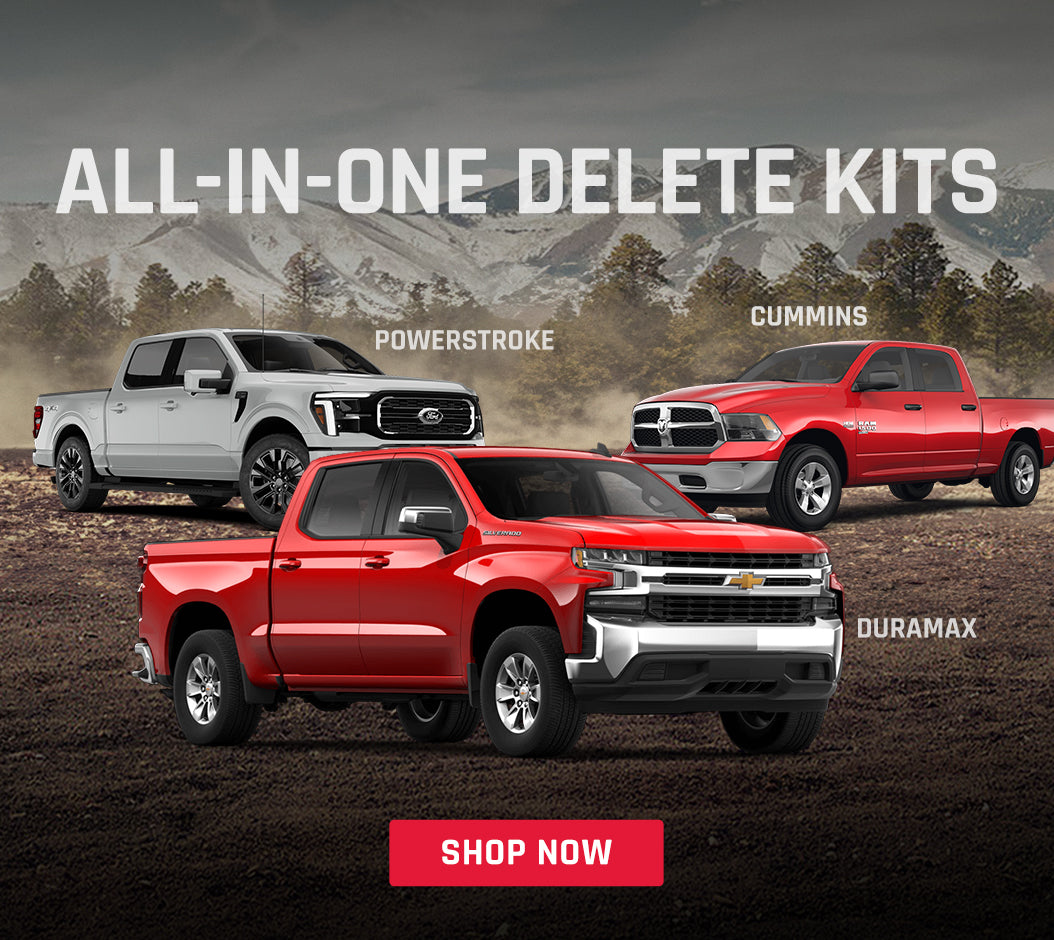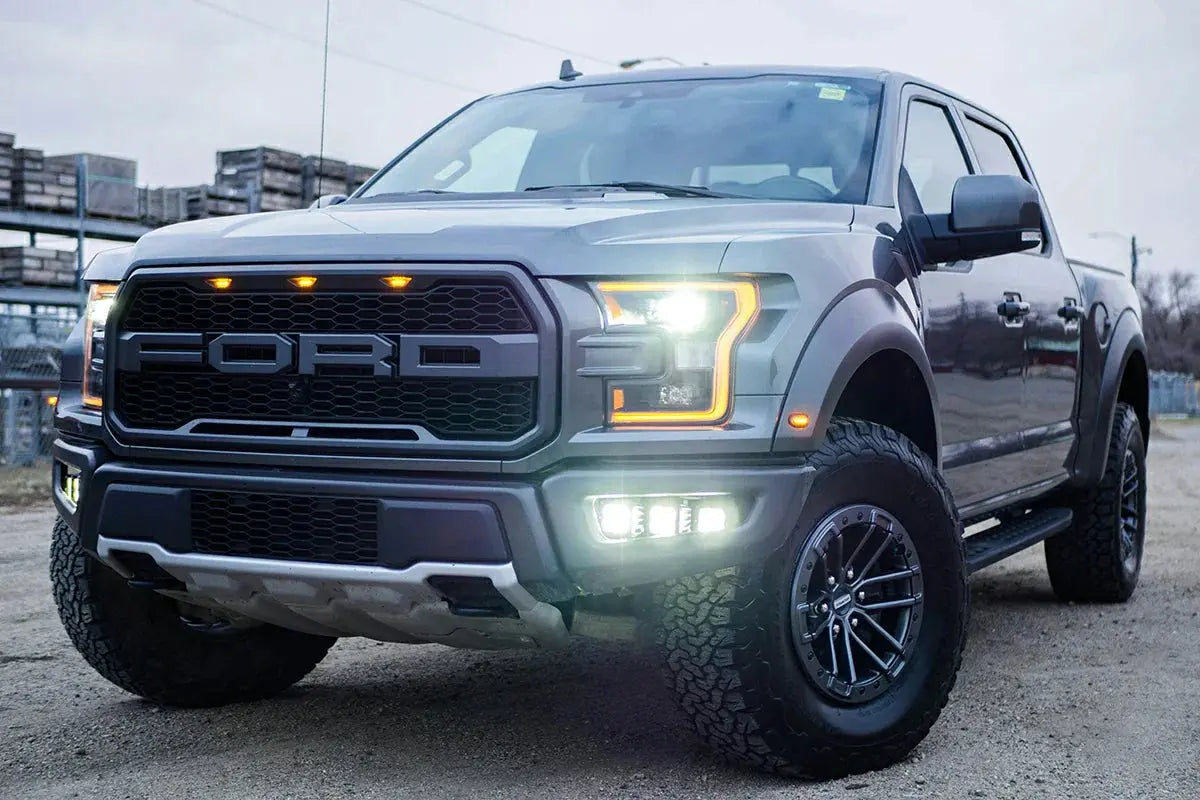Why Diesel Truck Owners Consider a Delete Kit
Heavy towing can put serious strain on your diesel truck—whether it’s a Ram 1500 EcoDiesel or a Cummins-powered 2500 or 3500. Over time, factory emissions systems like the EGR, DPF, and DEF setups can become more of a liability than a benefit when you're pulling weight regularly.
Drivers often notice sluggish throttle response, delayed turbo spooling, excessive regeneration cycles, and heat buildup when towing long distances or uphill. That’s not just inconvenient—it can seriously affect power delivery, fuel economy, and long-term engine health.
Delete kits are built to address these exact problems. By removing (or bypassing) the EGR, DPF, and DEF systems, you’re essentially removing flow restrictions and reducing exhaust backpressure—giving your engine room to breathe, tow harder, and stay cooler.
This isn’t about “more horsepower for fun.” It’s about making your truck work better, safer, and more efficiently when you’re putting it under real-world towing stress.
If you're towing frequently and you're fed up with limited response, rising DEF costs, or dealing with constant regen cycles, a delete system might be worth looking into.

5 Key Benefits of Deleting for Towing Performance
1. Better Torque and Smoother Shifting
When towing, low-end torque and consistent throttle response matter more than peak horsepower.
Deleting the DPF and EGR systems cuts down on exhaust restrictions. That means quicker turbo spool-up and more immediate torque delivery—especially helpful when starting from a dead stop or climbing a grade with a loaded trailer.
Pair that with a proper tune, and your shift points will feel cleaner, with less hesitation or gear hunting under load. It’s a night-and-day difference for many drivers who tow regularly.
2. Improved Exhaust Braking and Downhill Control
Towing heavy trailers downhill can be nerve-wracking, especially when your brakes start heating up.
With EGR removed and exhaust flow optimized, your exhaust brake system—whether factory-installed or aftermarket—can engage more aggressively. That adds stopping power without relying on your foot brakes, which means safer descents and less wear on your brake pads.
3. Noticeable Fuel Economy Gains
Let’s be honest—diesel trucks aren’t cheap to run, and DEF fluid adds up fast.
By deleting the DEF and DPF systems and tuning the ECM accordingly, most drivers see a 10–15% improvement in MPG, especially when towing.
You’re no longer wasting fuel during regen cycles, and you're not constantly feeding the DEF tank. That’s real money saved, especially for hotshot haulers or weekend warriors pulling trailers across long distances.
4. Lower Engine and Transmission Temps
High exhaust temps (EGT) and automatic transmission fluid (ATF) temps are two of the biggest enemies of long-term reliability.
After a delete, many users report EGT drops of 150–250°F, which is a massive relief for the turbo and transmission. Less heat equals less stress on drivetrain components during prolonged towing.
Combine that with a heavy-duty trans cooler and you’re setting your rig up for the long haul.
5. Reduced Maintenance and Long-Term Savings
DPF clogging, EGR valve failures, sensor errors—sound familiar?
Deleting these components eliminates some of the most failure-prone systems on modern diesels. You won’t be scheduling DPF cleanings, buying DEF fluid, or replacing cracked EGR coolers every 80,000 miles.
For frequent towers, these systems aren’t just annoying—they’re expensive to fix when they fail under load.
Delete Kit Recommendations by Truck Model
Ram 1500 EcoDiesel – Light-Duty, Fuel-Focused
If you’re driving a Ram 1500 EcoDiesel, chances are fuel economy is part of the appeal. But when towing, you may notice sluggish response and frequent regeneration cycles bogging down performance.
A full delete (EGR + DPF + DEF) paired with a mild tow-safe tune can transform how the 3.0L V6 behaves under load. You’ll get:
-
Sharper throttle response
-
Less heat under the hood
-
Better sustained torque for small trailers or campers
EcoDiesel doesn’t have Cummins-level pulling power, but deleting helps it operate more like a true workhorse without sacrificing MPG.
Ram 2500 / 3500 Cummins – The Heavy-Duty Workhorse
For Ram HD owners running the 6.7L Cummins, delete systems offer even more tangible benefits. This engine is built for towing, but factory emissions can still cause issues:
-
Heat soak on long climbs
-
Transmission slip
-
Limp-mode errors during regen
Deleting those bottlenecks unleashes the real power of the Cummins platform—especially when towing 12,000 lbs or more. A tow-safe tune can also optimize shift timing and turbo boost for more predictable uphill performance.
Typical Towing Use Cases That Benefit from Deleting
-
Fifth-wheel towing: Smoother throttle + stronger exhaust braking = safer downhill control
-
Hotshot hauling: Better MPG and less downtime means higher profit per mile
-
Construction/landscaping trailers: Reduced stress on drivetrain during stop-and-go jobs
Whether you're pulling for work or recreation, delete mods help tailor your truck to handle the job with less strain—and fewer repairs over time.

Cost vs. Benefit: Is Deleting Worth It for Towing?
Let’s break down the real numbers. A lot of truck owners ask: “Is it worth the investment?” If you're towing regularly, the short answer is—yes, and here's why.
Fuel Savings Over Time
After deleting DPF/DEF and applying a tow-friendly tune, most drivers report a 10–15% improvement in MPG. That may not sound like much at first, but when you're hauling 10,000+ lbs, small improvements add up quickly.
Let’s say you tow 10,000 miles per year:
-
Stock: 11 MPG = ~910 gallons
-
Deleted: 13 MPG = ~770 gallons
That’s a savings of 140 gallons/year, or roughly $500–600 at today’s diesel prices.
Add in DEF fluid—if you’re burning through a tank every 1,000 miles, that’s another $300–500 saved per year.
Avoiding Expensive Emissions Repairs
Deleted trucks don’t require:
-
DPF cleanings or replacements ($800–$2,000)
-
EGR cooler replacements ($1,200+)
-
DEF system servicing or sensor repairs ($500–$1,000)
Over 2–3 years, those costs can stack up fast—especially for hard-working trucks that see constant load.
Improved Longevity of Drivetrain Components
Less heat, less regen, and smoother power delivery = longer life for:
-
Turbos
-
Transmissions
-
Head gaskets
-
Cooling systems
For fleet owners or contractors who depend on uptime, avoiding a single major failure could justify the delete investment in one shot.
When Deleting Doesn’t Make Sense
If you rarely tow, use your truck mainly for short commutes, or need to remain emissions-compliant in your state, deleting may not provide enough benefit to offset the legal and mechanical risks.
But if you're towing regularly and putting real load on your engine, it's one of the most effective upgrades you can make.
Legal Considerations: Is Deleting Your Truck Street Legal?
Here’s the truth many shops won’t sugarcoat—deleting emissions systems on a diesel truck is not legal for on-road use in the U.S. or Canada unless you’re using the vehicle strictly in off-road or race-only settings.
The EPA and CARB have strict regulations around tampering with emissions equipment. That means:
-
Deleted trucks cannot be registered for road use in many states
-
You may fail annual inspections or smog tests
-
It voids factory warranties and could even lead to fines if caught
So... Is It Ever Okay?
Yes, in certain use cases:
-
Off-road only work trucks (farms, ranches, industrial sites)
-
Race builds or sled-pull rigs
-
Hotshot trucks registered and operated in regions with lenient enforcement (though this is a gray area)
If you're building a delete setup, it's essential to know your state’s enforcement policies and any changes to registration or insurance status that could come with it.
What Are the Risks?
-
You could be denied insurance claims if the truck is found to be non-compliant
-
Dealerships won’t cover warranty work
-
Resale value may drop, especially if selling to someone in a regulated state
Bottom line? Deleting is a performance and efficiency move—but it’s your responsibility to use it in a legal, controlled environment.
Step-by-Step: How to Build a Tow-Optimized Delete Setup
Deleting your emissions systems isn’t a one-and-done job—it works best when integrated into a full towing setup. Here’s a clear path to doing it right.
Step 1: Know Your Towing Needs
Start with your actual use case. Are you pulling a 10,000 lb fifth-wheel once a month? Or hauling 20,000 lbs across state lines weekly?
Your towing frequency, load weight, and terrain (flat vs. hilly) will influence what upgrades make sense.
Step 2: Select a Full Delete Kit
Choose a delete kit that includes:
-
EGR delete components (block-off plates, coolant reroute)
-
DPF/SCR delete pipe (exhaust system replacement)
-
ECM tuning software or modules to disable regen cycles and CELs
Make sure the kit matches your engine model, year, and emissions setup. Don’t mix parts from different platforms.
Step 3: Pair With a Tow-Specific Tune
A tow-safe ECU tune optimizes:
-
Turbo boost timing
-
Fuel delivery under load
-
Shift points for smoother gear transitions
Avoid “race” or “max power” tunes unless you're on the track. A conservative, reliable towing tune is what you want here.
Step 4: Upgrade Heat Management
Deleting reduces heat, but for serious towing, go further:
-
Install a heavy-duty transmission cooler
-
Add EGT and trans temp gauges
-
Use a deeper trans pan if needed
Keeping temps in check = fewer breakdowns on the side of the highway.
Step 5: Reinforce the Suspension
You’ll get the most benefit from deleting when the truck rides level and handles the load:
-
Install airbags or helper springs
-
Add a weight distribution hitch
-
Upgrade rear shocks if needed
This improves braking, reduces sway, and makes driving far less stressful.
Deleting isn’t just about horsepower—it’s about building a truck that tows smart, runs cool, and lasts longer under pressure. With the right parts and a thoughtful setup, you'll feel the difference every mile.
Final Thoughts: Is a Delete Worth It for Your Towing Truck?
If your diesel truck lives its life under load—pulling trailers, equipment, or campers across long distances—then deleting the emissions systems can be one of the most impactful upgrades you’ll make.
You’ll tow with more confidence. Your engine will run cooler and respond faster. And you’ll likely save hundreds each year on fuel, DEF fluid, and maintenance.
But this isn’t a plug-and-play decision. You need to weigh:
-
Your legal environment
-
Your driving patterns
-
Your willingness to maintain compliance off-road
For off-highway trucks, tow rigs in rural areas, or work trucks that prioritize uptime and durability, deletes make both mechanical and financial sense.
Want help planning a delete setup for your towing truck? Reach out—we’re here to help you build it right, the first time.


